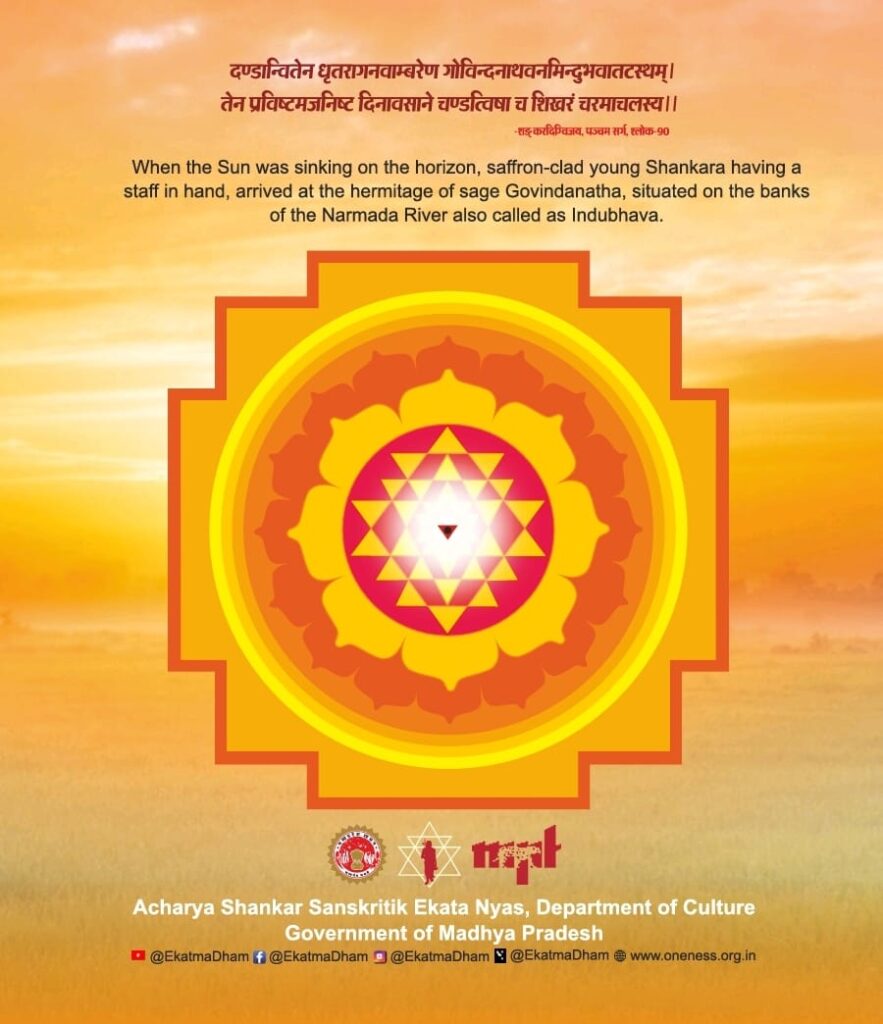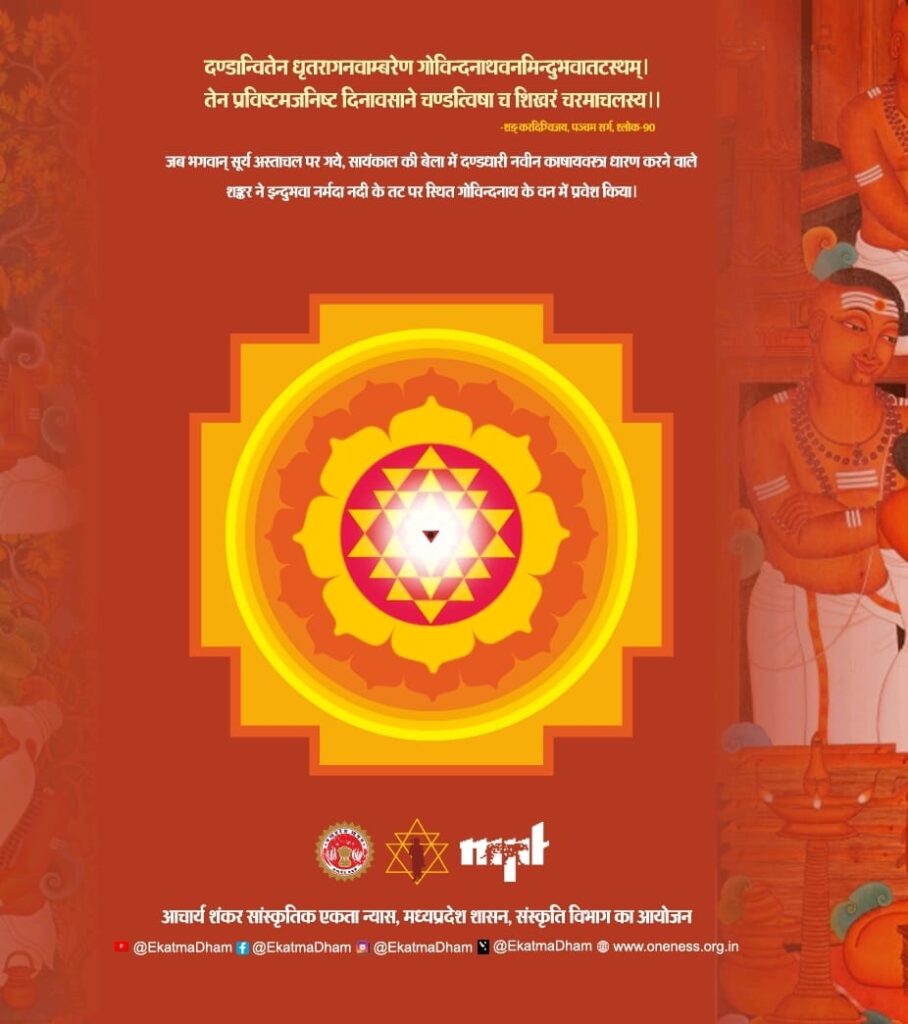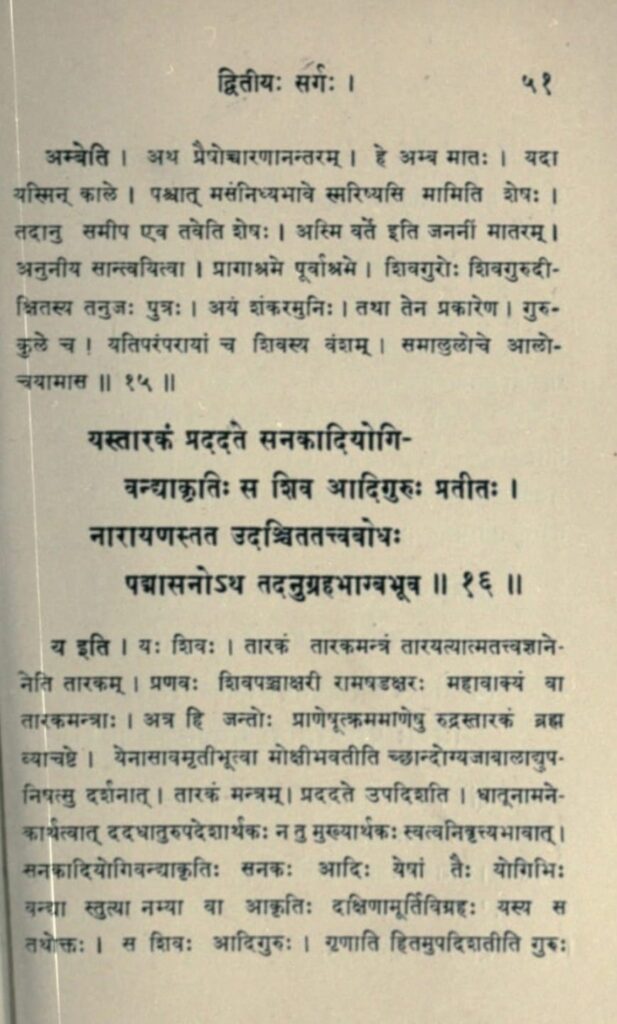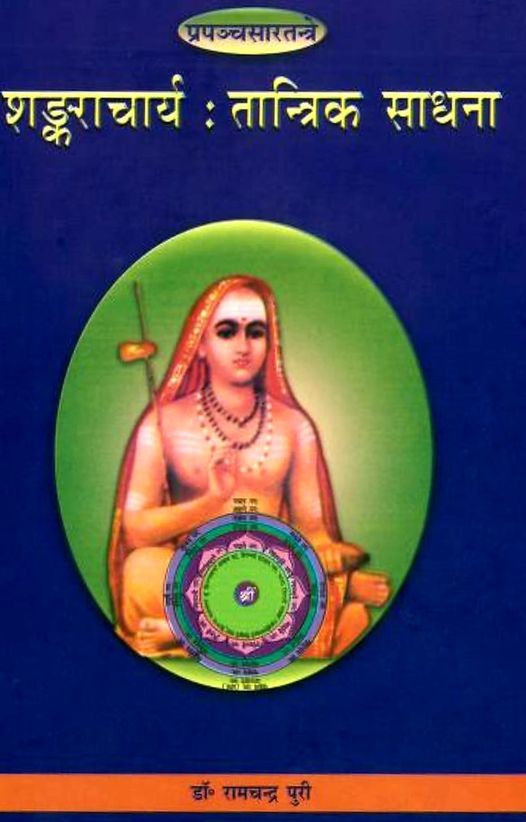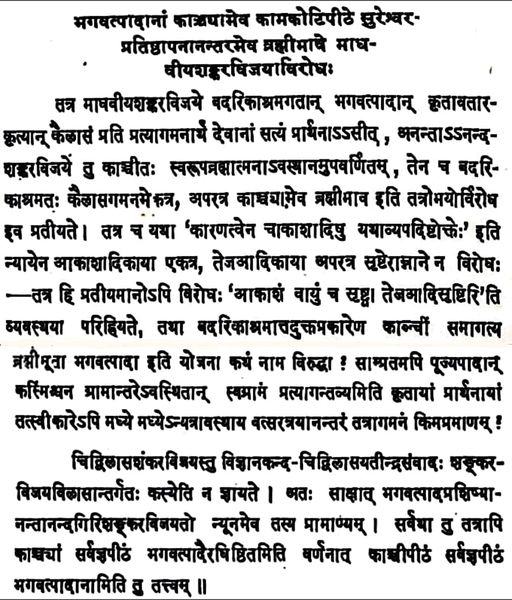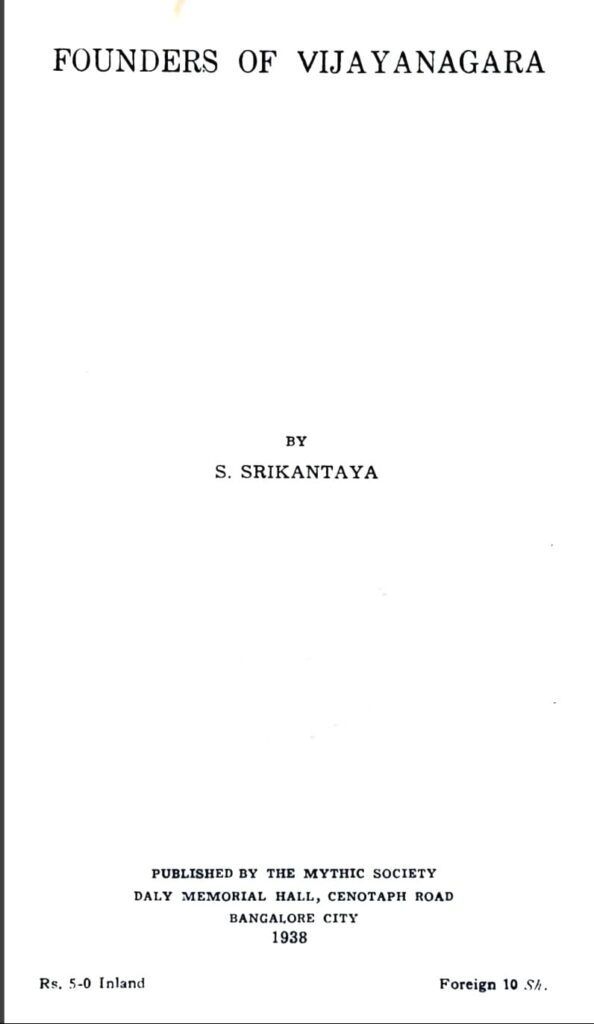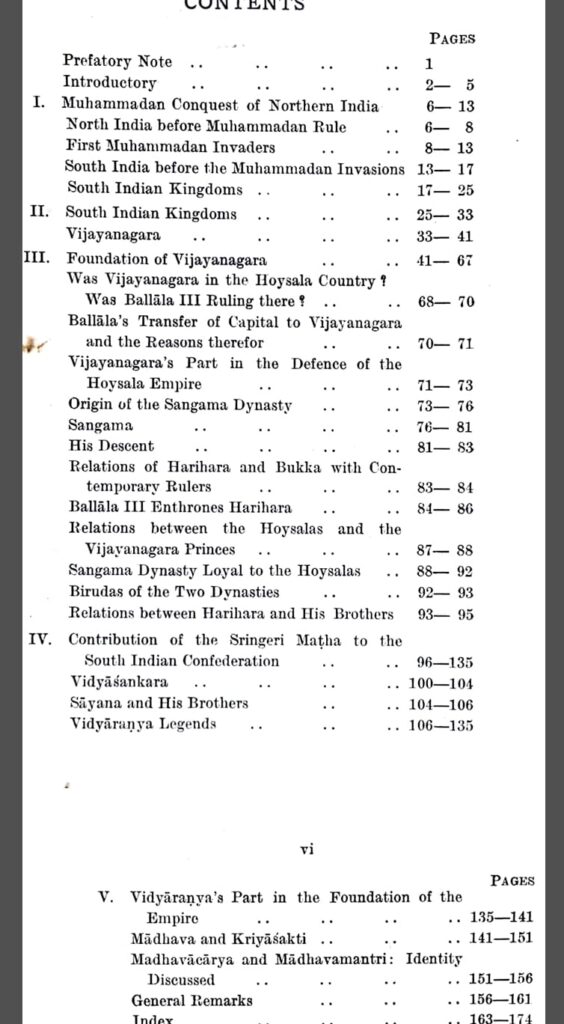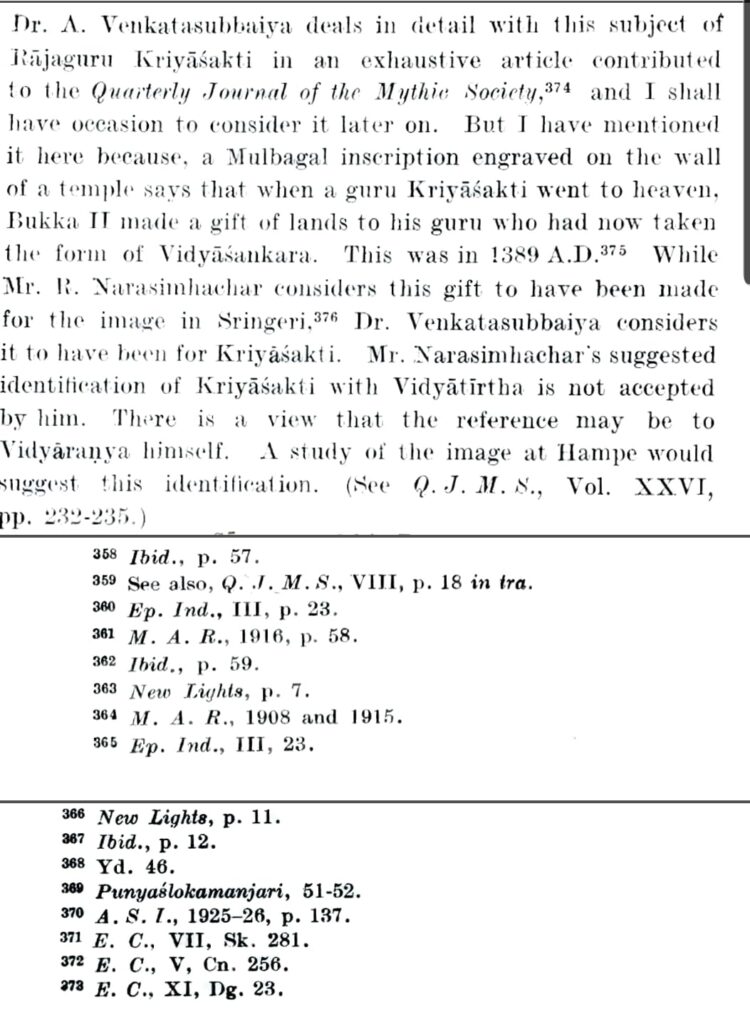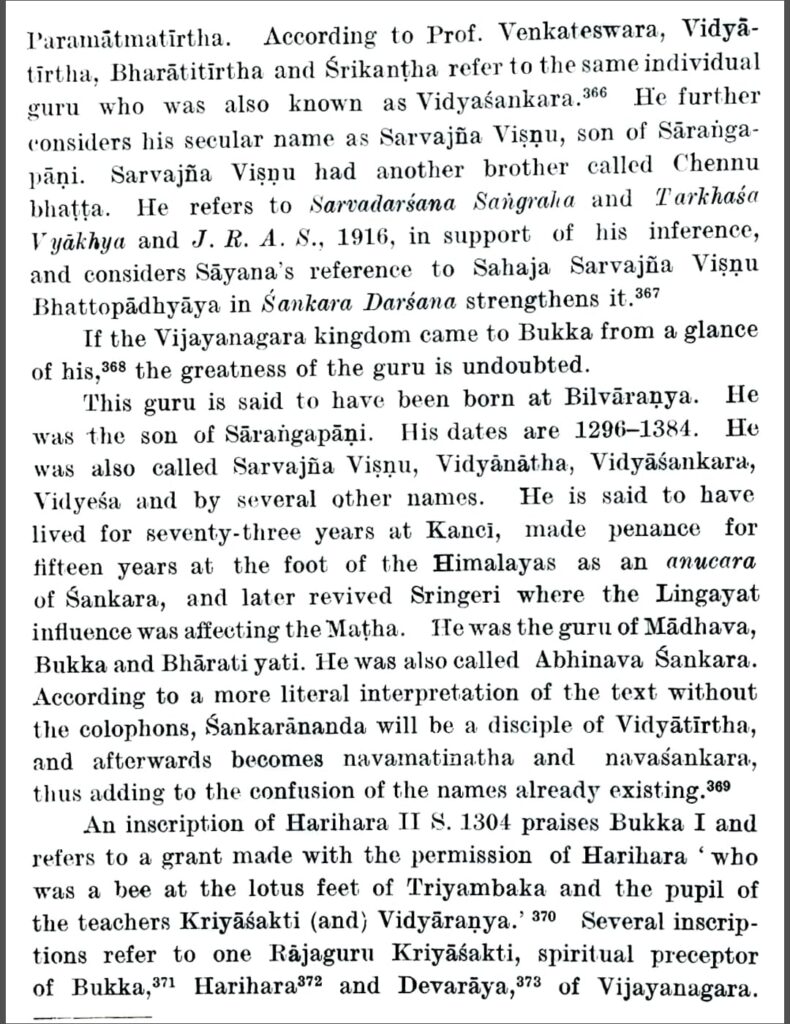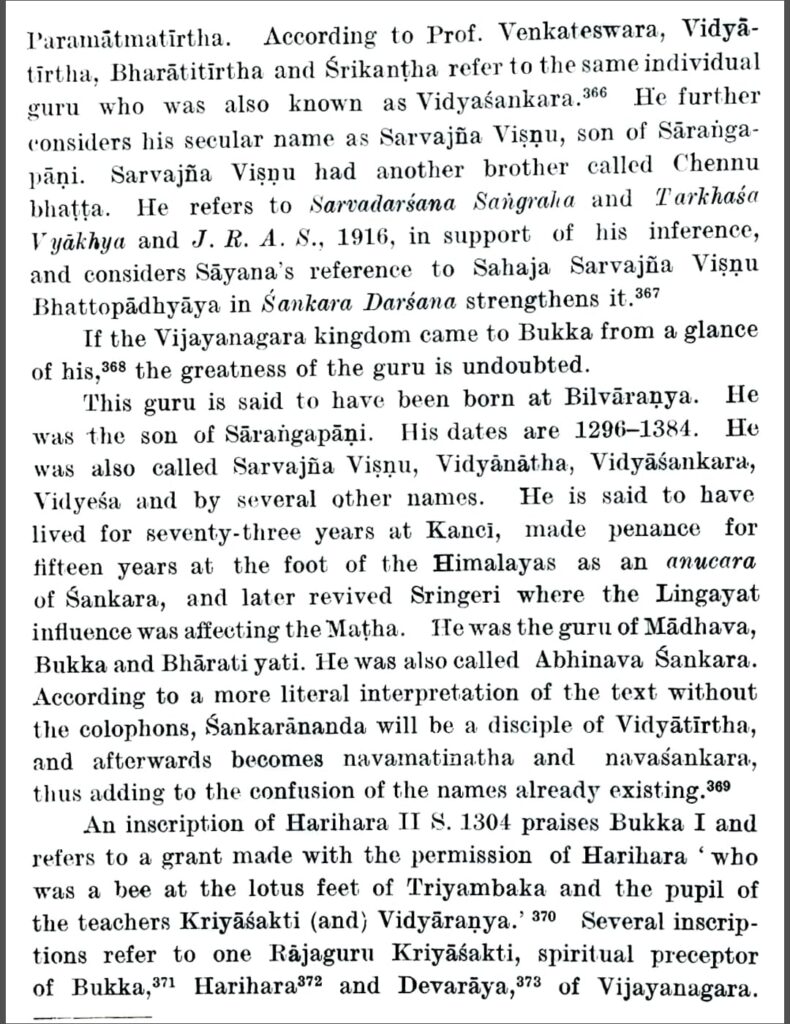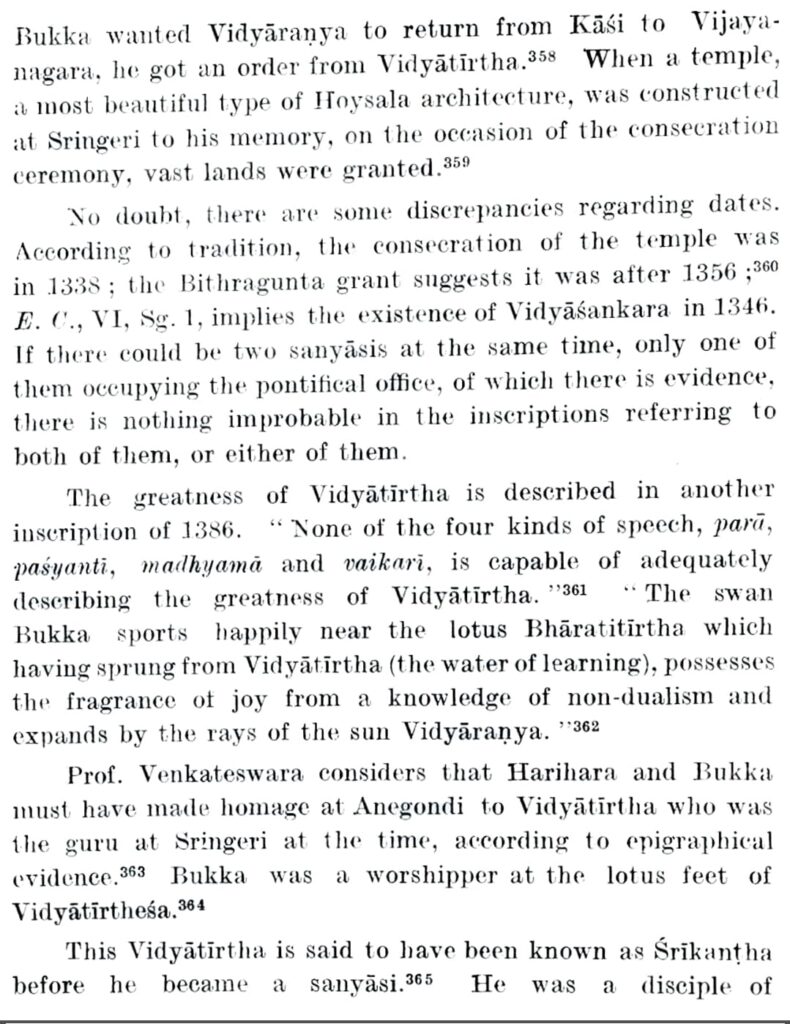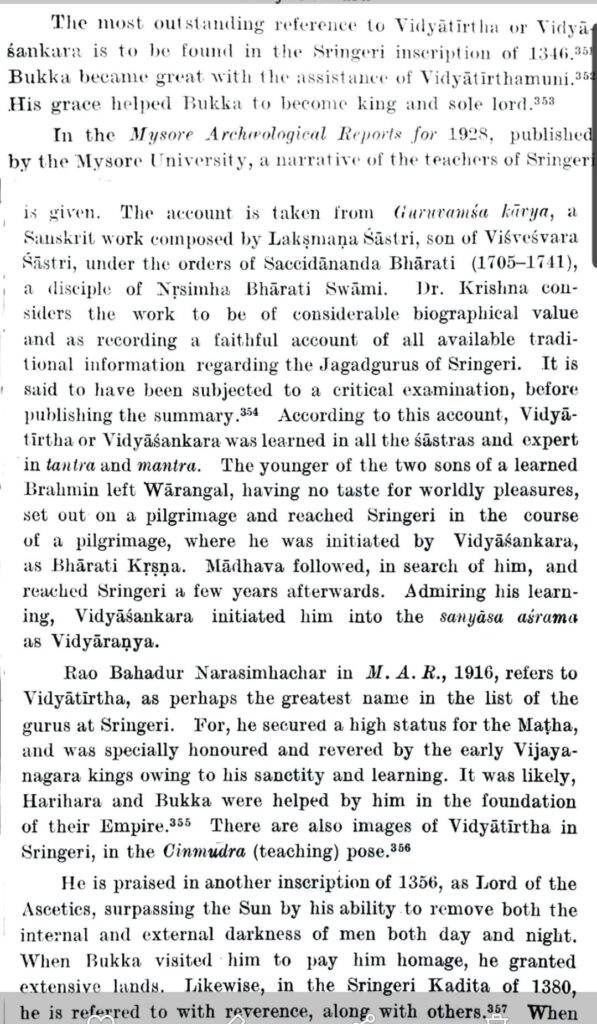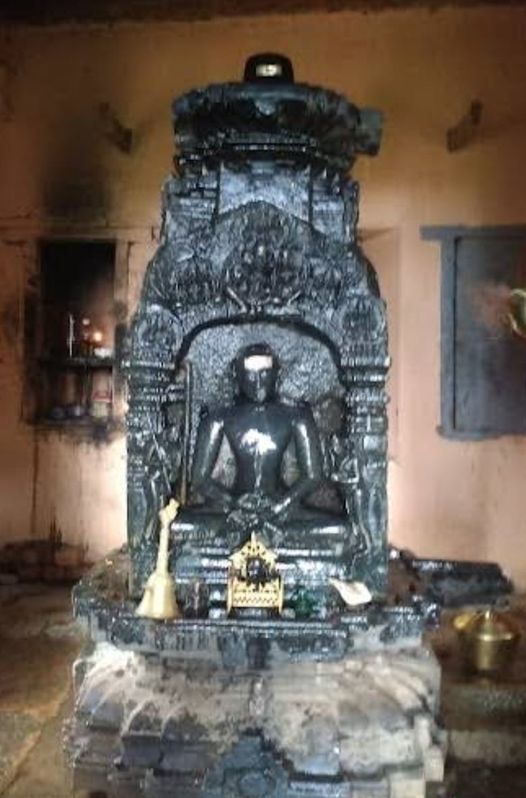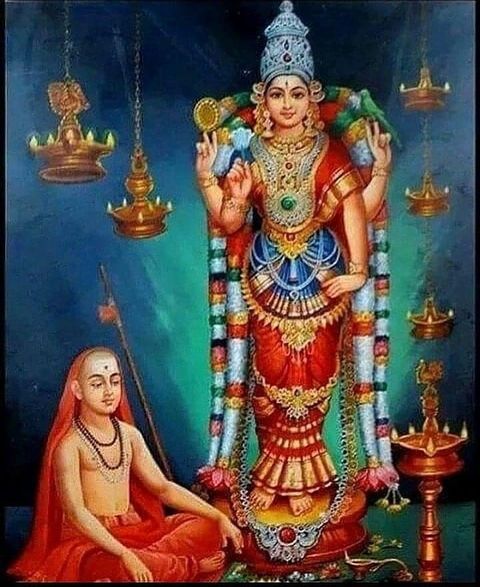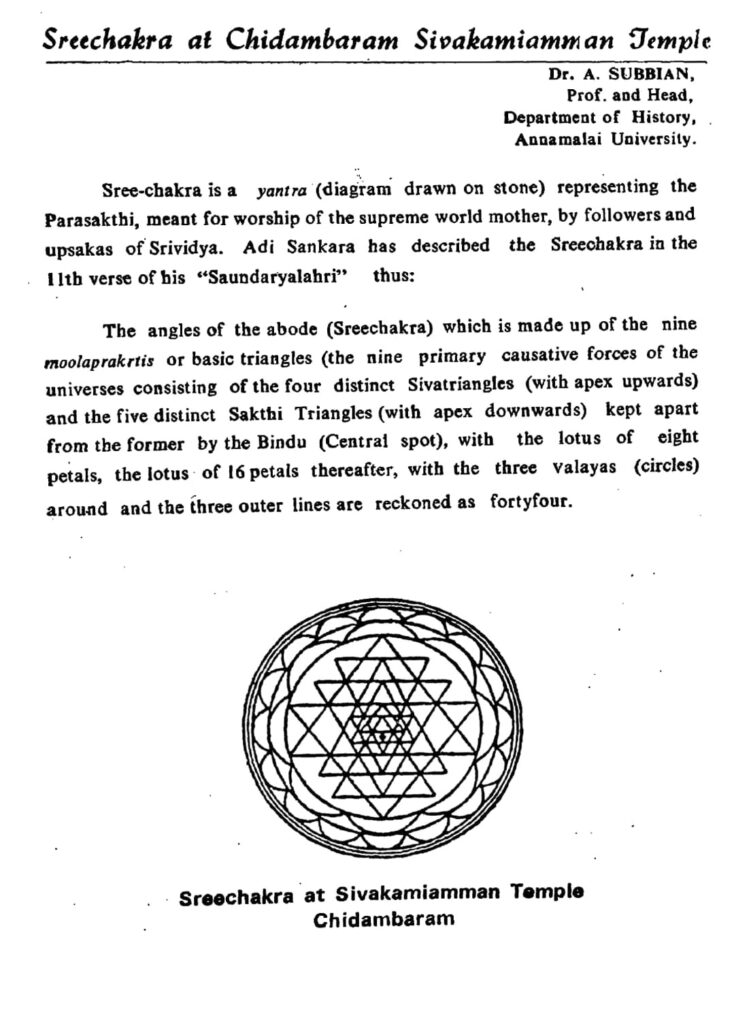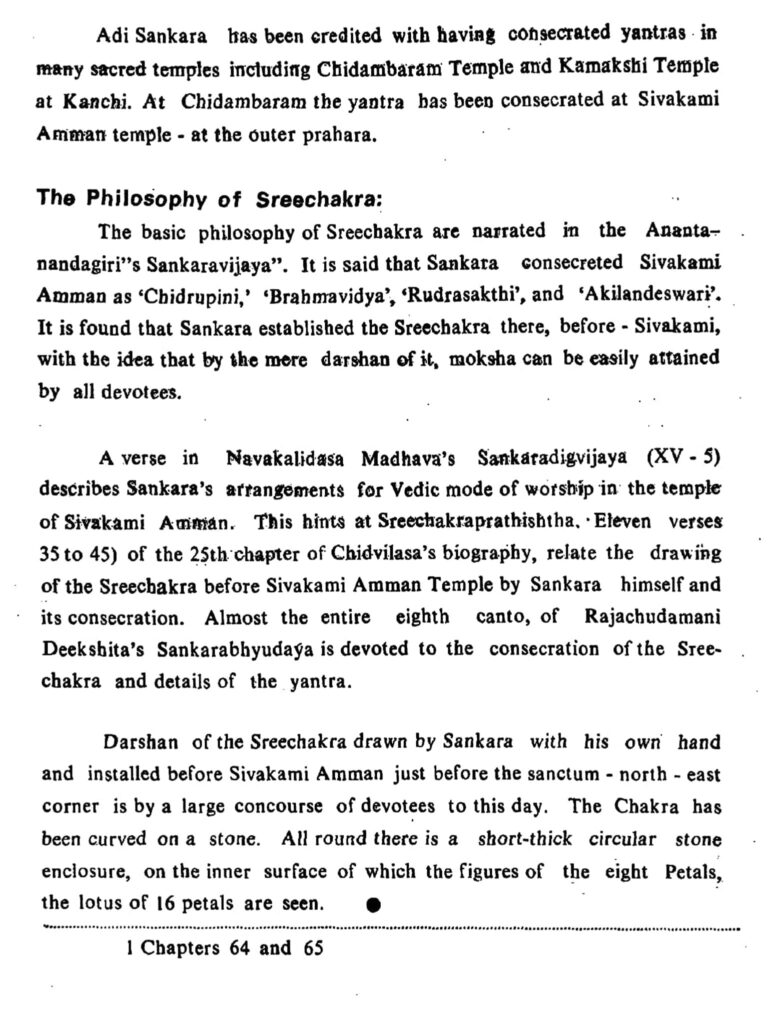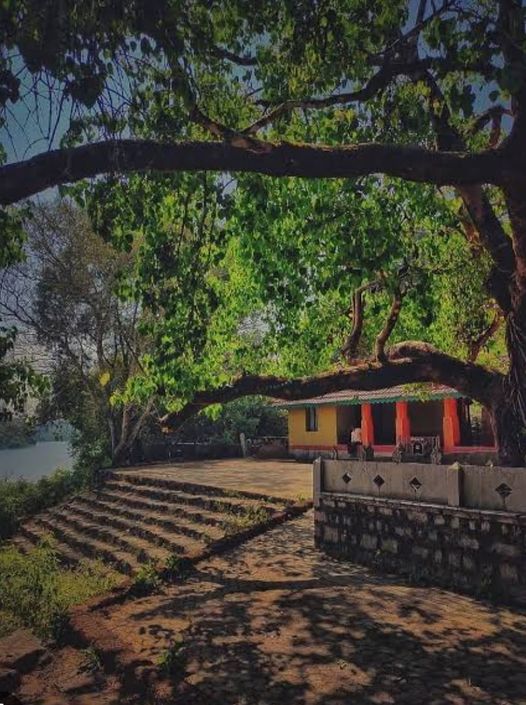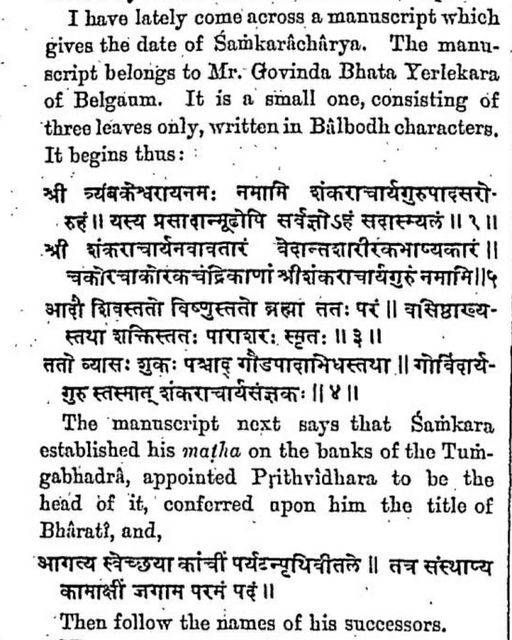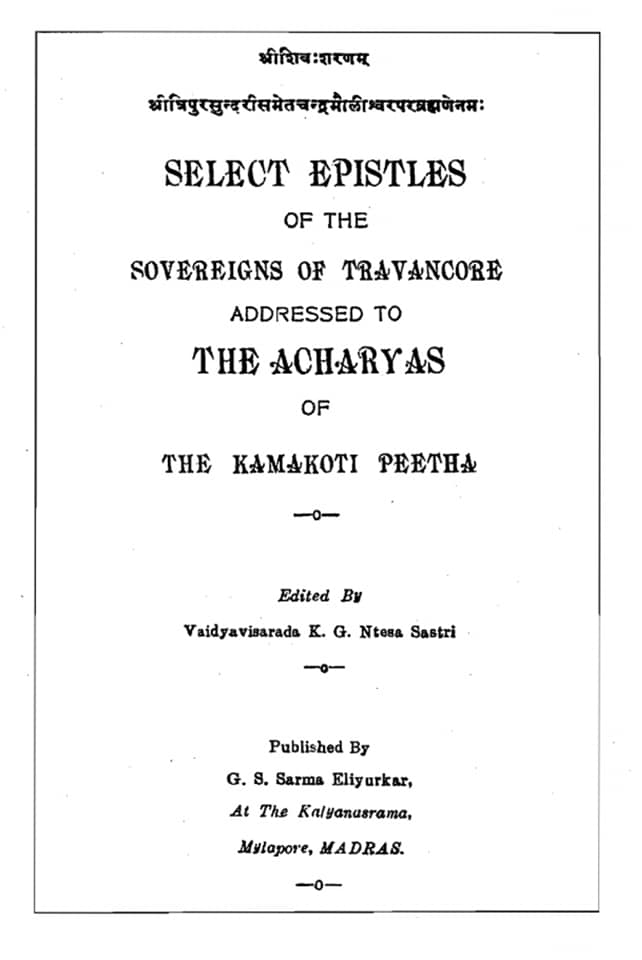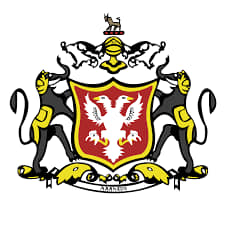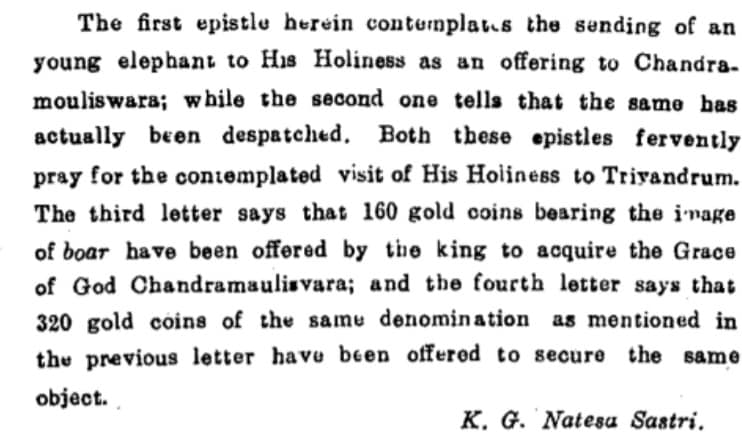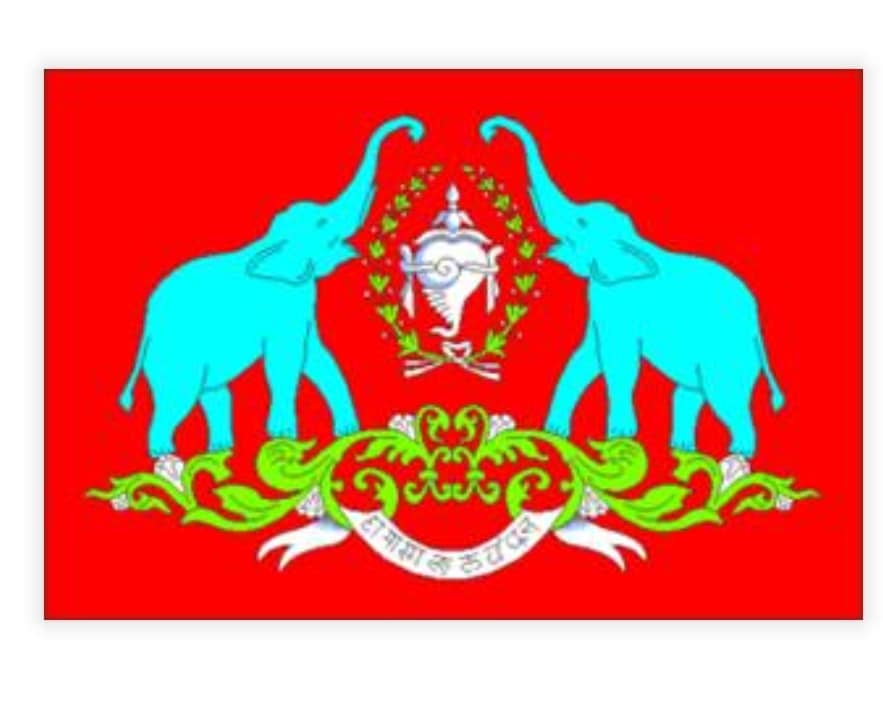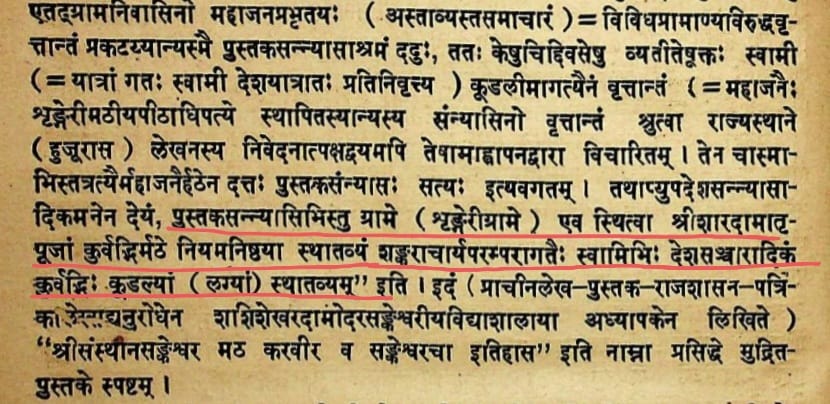
Within the Tunga Sringeri tradition, there are variations in the location of Govinda Muni’s ashrama, as documented in different texts:
Chidvilasa’s Sankara Vijaya mentions Ratnagarbha Ganapati who is worshipped in Tunga, the ashrama of Vibhandaka Muni, a detailed description of Sringeri, the establishment of four peethas and Bhagavatpada’s ascent of Sarvajna Pitha in Kanchipuram and can be understood as the work that upholds the Tunga tradition.
However, this work curiously places Govinda Muni’s ashrama in Badarikashrama in the Himalayas and has the following description of Govinda Bhagavatpada shining like the Sun with Rudraksha mala.
अन्विष्य शङ्कराचार्यः सर्वत्र जगतीतले ।
क्रमेण बदरीं प्राप यत्र विष्णुस्तपस्यति ॥ ३८ ॥
…
बदर्यो भूरुहो यत्र फलन्ति स्वर्दुमा इव ।
तत्रैकत्र समासीनमुटजाभ्यन्तराङ्गणे ।। ४३ ।।
ध्यायन्तं परमेशानं व्याघ्रकृत्तिकृतासनम् ।
भूत्युद्भासितसर्वाङ्गं पौण्डरीकोत्तरच्छदम् ।। ४४ ।
रुद्राक्षमालिकाजालसमाकलितविग्रहम् ।
निस्तरङ्गमिवाम्भोधिं निर्विकारमिवाशुगम् ।। ४५ ।।
निस्तमस्कमिवादित्यं भास्वन्तमिव पावकम् ।
गोविन्दभगवत्पाददेशिकेन्द्रमलक्षयत् ।।४६ ।।
In a stark departure from Chidvilasiya, the Madhaviya Sankaravijaya mentions that meeting of Bhagavatpada with His guru Govinda Bhagavatpada happened on the banks of “Indubhava”.
Given that Chidvilasiya is of relatively older antiquity than Madhaviya, and Madhaviya is a sangraha of many texts from Vyasachaliya to Shankarabhyudaya, one has to wonder what source of Madhaviya Shankara Vijaya is for mentioning Narmada as the meeting place.
दण्डान्वितेन धृतरागनवाम्बरेण गोविन्दनाथवनमिन्दुभवातटस्थम् ।
तेन प्रविष्टमजनिष्ट दिनावसाने चण्डत्विषा च शिखरं चरमाचलस्य ॥ ११ ॥
Madhaviya Shankara Vijaya uses the newly coined term “Indubhava” for River Narmada based on the traditional name “Somodbhava” replacing “Soma” with “Indu”. It is from the commentaries of Madhaviaya such as Advaitarajyalakshmi quoting Dindima that we know this.
It may also be noted here that Gururatnamala of Sadashivendra Sarasvati mentions “uparevam” situated near Reva nadi both in the stuti on Govinda Bhagavatpada and also mentions the word “pratichandrabhavam” similar to indubhava usage of Madhaviya when talking of where Shankara Bhagavatpada met Govinda Bhagavatpada. Likewise Tirumala Dikshita’s Shankarabhyudaya also mentions Narmada Tiram as the Place of Their meeting.
Given the wide extraction of many verses from Tirumala Dikshita’s work in Madhaviya, there is a likelihood that these works may have been a source for Navakalidasa Madhava, the author of the 18th-19th century Samkshepa Shankarajaya (Shankara Digvijaya) in its departure from Chidvilasiya Sankaravijaya. .
Curiously, Tunga Sringeri Matha’s Guruvamsa Kavya does not mention the location Govinda Muni’s ashrama.
The disparity between the Guruvamsa kavya and the Madhaviya Sankara vijaya and Chidvilasiya Sankaravijaya becomes a perplexing puzzle. It leaves room for speculation that either these two Sankara vijayas were not in existence when Guruvamsa kavya was written, or the Tunga Sringeri adherents were unaware of their existence when guiding the composition of Guruvamsa kavya.
